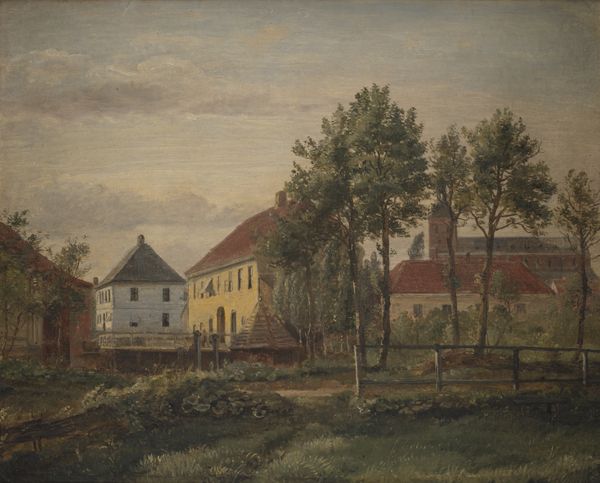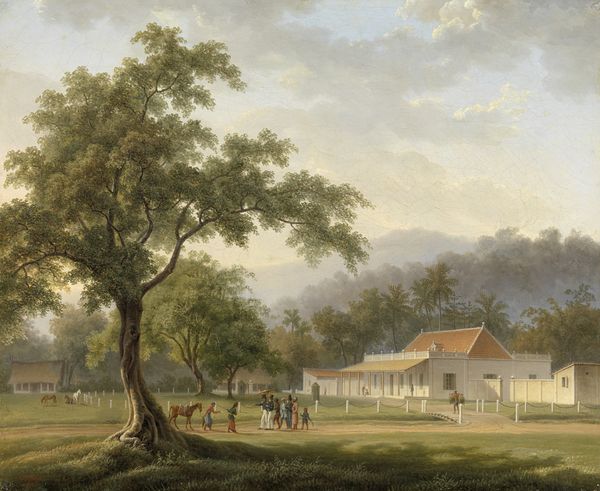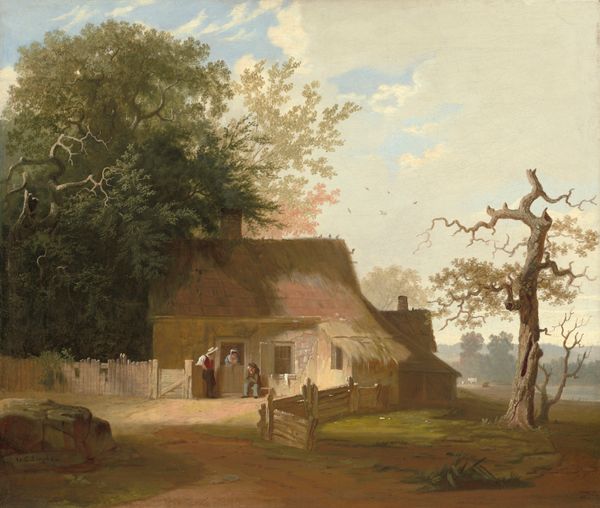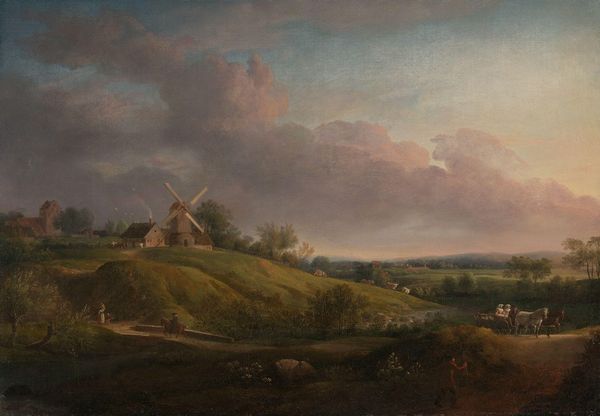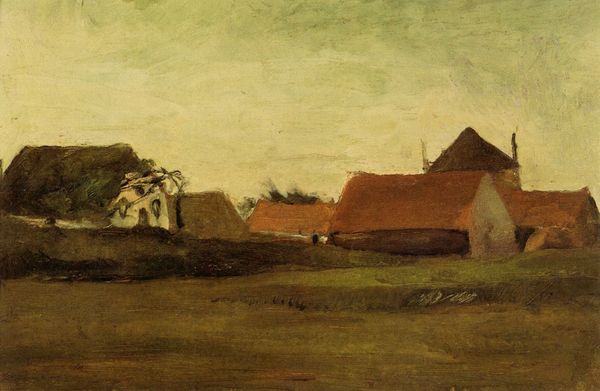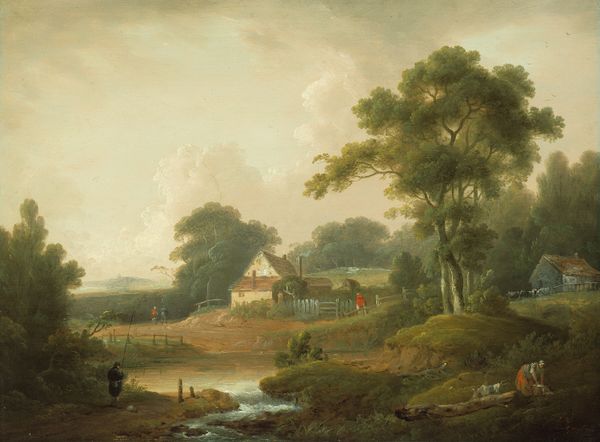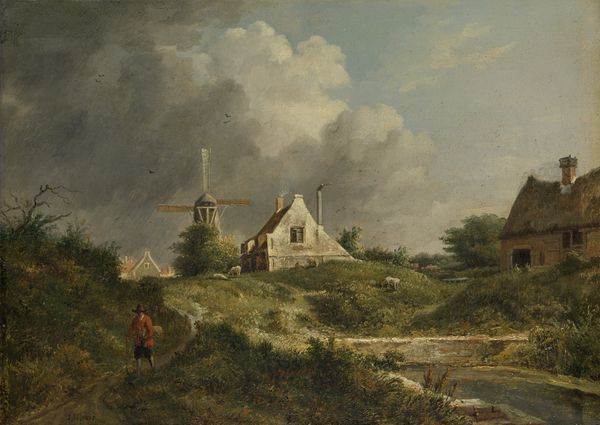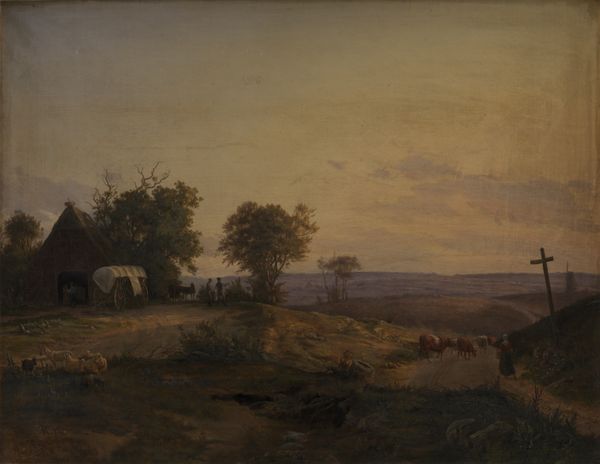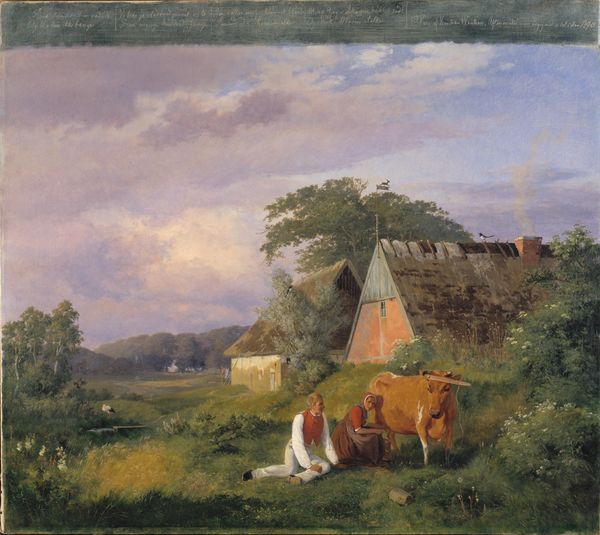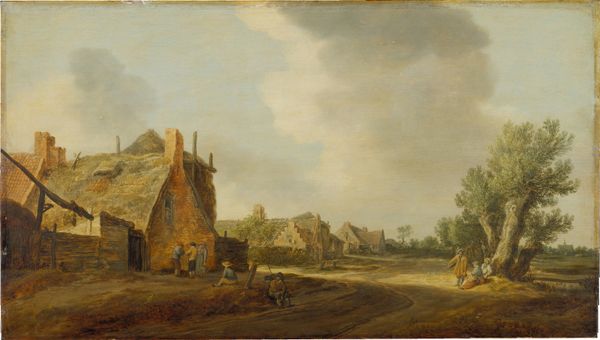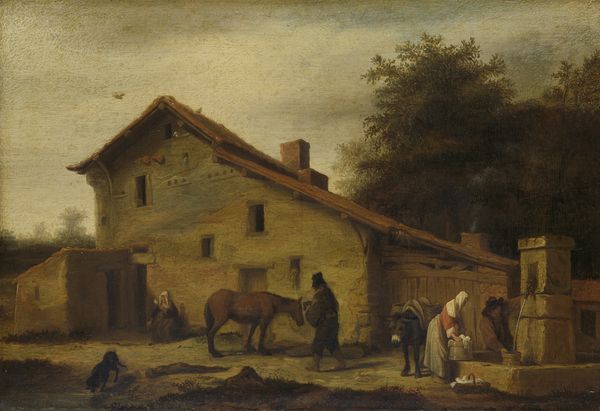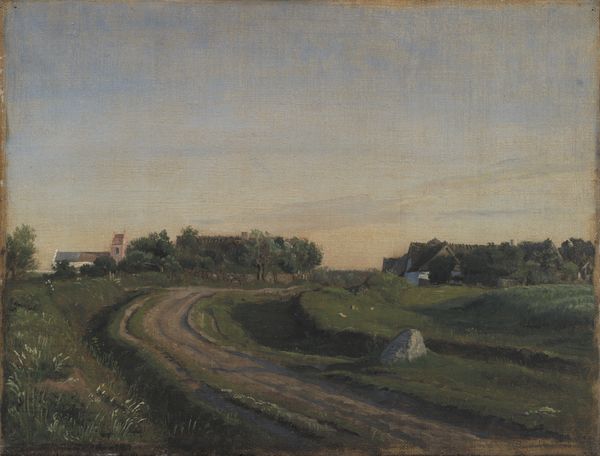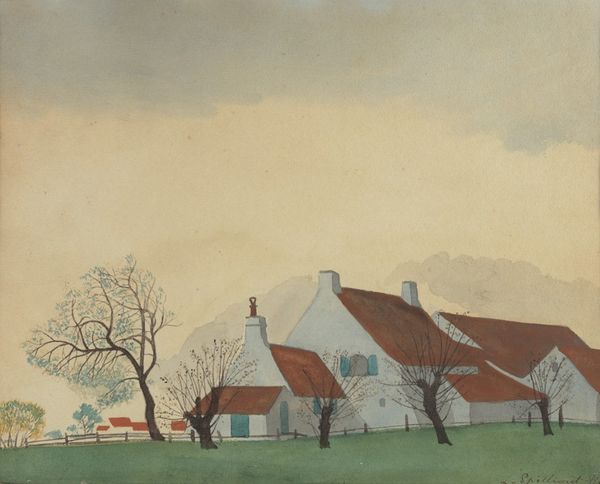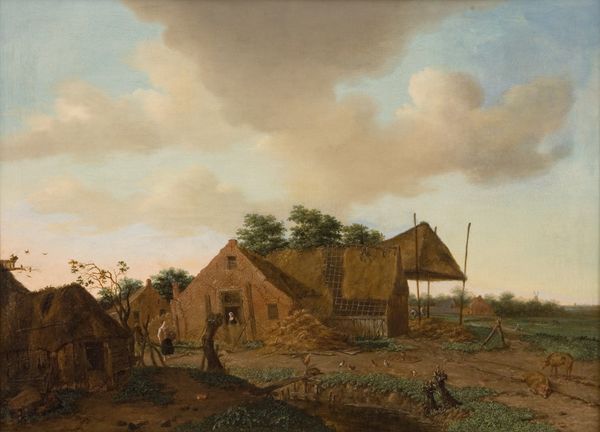
painting, oil-paint
#
water colours
#
dutch-golden-age
#
painting
#
oil-paint
#
landscape
#
oil painting
#
underpainting
#
orientalism
#
cityscape
#
genre-painting
#
watercolor
#
realism
Dimensions: height 43.2 cm, width 55 cm, thickness 1.7 cm, depth cm
Copyright: Rijks Museum: Open Domain
Curator: What a remarkably placid scene. This is "A Sugar Factory (?) on Java," painted around 1849 by H.Th. Hesselaar. The artist gives us a view of a colonial sugar production facility in Java. Editor: It has a curious, almost unsettling stillness to it. The pale yellow sky, the precise rendering of the buildings, and the rather stiff figures… it feels staged, constructed. Curator: Indeed. Hesselaar, like many artists of his time, straddled the line between documentation and orientalist representation. We have to consider the socio-political context. The Dutch colonial project relied on imagery that both exoticized and seemingly tamed the landscapes it exploited. Editor: And the "taming" is key. The painting presents a specific material reality – sugar production – but distances us from the actual labor. Where are the bustling bodies, the sounds and smells of industrial activity? We see a worker casually raking, smoke rising… it’s almost pastoral. The oil paint and the "Dutch Golden Age" style is intriguing too – materials speaking to power. Curator: Precisely. This is not merely a depiction of a factory. It is a performance of colonial authority, where the means of representation, the very act of painting, reinforces a narrative of control. Editor: I'm also struck by the underpainting that peeps through – visible brushstrokes acknowledging the hand of the painter. This reminds me that representation is always work. Curator: And a work that inevitably carries its own biases. The composition draws our eye to the neatly ordered architecture, downplaying any visual discord. It's designed for European consumption. This image participates in a system. Editor: Yes. We have to constantly interrogate whose labor, whose material reality, gets foregrounded or erased in these depictions. I think seeing those flag on top the buldings highlights the intentions here as well. Curator: By unpacking these visual strategies, we expose the complexities inherent in even the seemingly most straightforward historical records. Editor: It forces us to recognize the agency that materials hold and what stories they truly have to share with us about culture. Curator: A fascinating piece – a confluence of artistic practice and imperial power. Editor: Precisely. A view that, under closer scrutiny, reveals far more than first meets the eye.
Comments
No comments
Be the first to comment and join the conversation on the ultimate creative platform.
